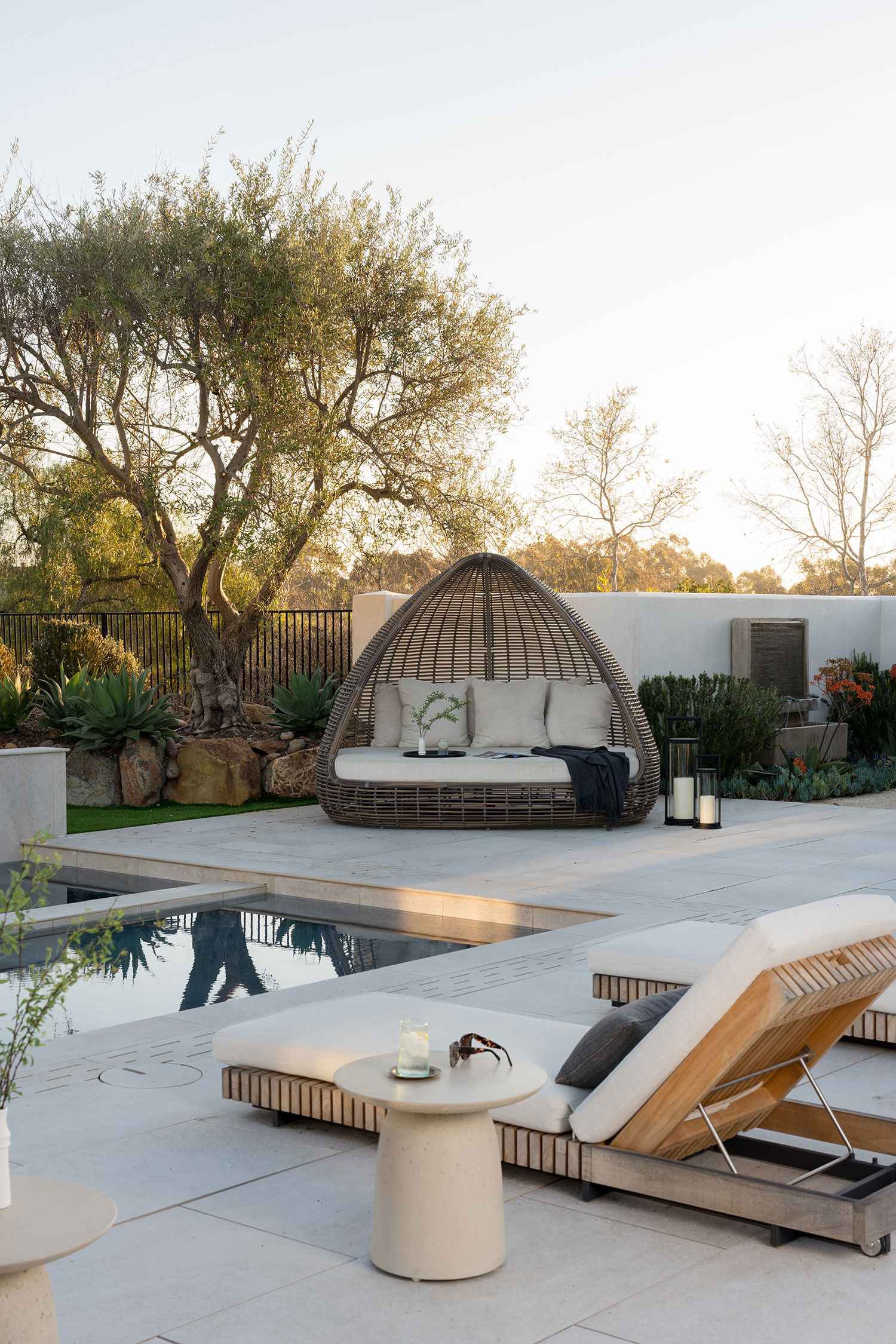As the saying goes, nothing lasts forever—yes, including your outdoor furniture. It doesn’t matter if you live somewhere warm and get a lot of mileage out of them or only bust out your go-to pieces once summer finally rolls around; your patio dining set, lawn chairs, and poolside loungers are all susceptible to wear and tear.
The thing that nobody really talks about is that it can sometimes be tricky to understand when you actually need to replace your outdoor pieces. When it comes to your indoor decor—you know, the pieces you use every single day—the slightest squeak, snag in your upholstery, or saggy cushion can be an immediate red flag. However, unless you enjoy your patio pieces every single day, it can be hard to suss it out. Has your sectional always been this squishy? Are those discoloration marks sun spots or something more serious? And, of course, there’s always the question of what to look for in your new outdoor furniture.
To help, two interior designers are breaking down everything you need to know about replacing your pieces. With any luck, you’ll be able to spend less time debating over your piece and more time doing what summer is all about: kicking back, relaxing, and enjoying some well-deserved fun in the sun.
Design by Christina Kelley; Photo by Charlotte Lea Photography
Sign #1: Your Furniture Is Rotten or Rusty
Never underestimate the power of a sturdy foundation—and the weakness of one that’s not up to snuff. The next time you check out your patio furniture, look for obvious signs of wear and tear. According to Patty Hampton, head of design at Refresh Your Space in the Bay Area, it’s important to decide whether your pieces have seen better days or are just a little dirty. “If the furniture framing can be scrubbed, and the dirt comes off, it should be good,” she shares. “It’s time to replace it when there are signs of rust, wood rot, or if there are weak spots.” San Diego-based designer Christina Kelley agrees and says “rust and rot” are the biggest red flags.
Sign #2: Your Woven Wares Have Gone Wild
Look, we know wicker furniture will give your yard a pretty coastal grandmother flair, but Kelley says these pieces aren’t always worth the headache. “Avoid natural wicker outdoors,” she says. “It can’t handle the elements.” Chances are, natural wicker shows damage quickly so Kelley recommends replacing the real deal for an alternative made with weather-resistant, high-density polyethylene (or HDPE) resin wicker. Regardless of material, Kelley says you should always give unraveling wicker the heave-ho. “Your patio deserves better,” she says.

Design by Christina Kelley; Photo by Charlotte Lea Photography
Sign #3: Your Furniture Has Low-Quality Materials
Like the rest of your home decor, quality matters. While you shouldn’t immediately discard furniture made with cheaper materials, you should keep a closer eye on them. After all, since low-quality pieces are likely to have a shorter lifespan, they’ll need to be replaced more often.
For Kelley, one of the biggest offenders is PVC, which she says you should always skip. “It’s shiny, brittle, and fades fast,” she explains. “And it ends up in the landfill.” Instead, Kelley says “HDPE resin beats PVC every time.” “It looks more natural, holds up in sun and salt, and lasts.” Meanwhile, Hampton is partial to teak wood, which she says can be cleaned up or even stained to give it a “fresh look.”
Another material don’t? Flimsy, thin upholstery. “Scratches and tears in the fabric will definitely get worse over time,” Hampton says. “Plus, you’re contending with dampness outdoors.” Instead, she recommends buying items made with Sunbrella fabrics, which are specially formulated to resist UV rays and water.

Courtesy of Amazon
Sign #4: Oops… You Neglected Upkeep
Just because your outdoor furniture belongs outside doesn’t mean that it doesn’t require upkeep. Both designers agree that all starts with the proper storage. “Outdoor furniture covers are a must,” Hampton says. “Bonus points for securing them to the furniture to prevent water damage.”
She adds it’s equally important to store outdoor pillows, cushions, rugs, or anything with fabric during the off season to prevent mildew. Meanwhile, Kelley stresses the importance of treating your pieces with a sealant or rust protector each year.
If you haven’t done any upkeep? Well, maybe your outdoor furniture has seen better days…
We only recommend things we love. If you buy something through our site, we might earn a commission.

